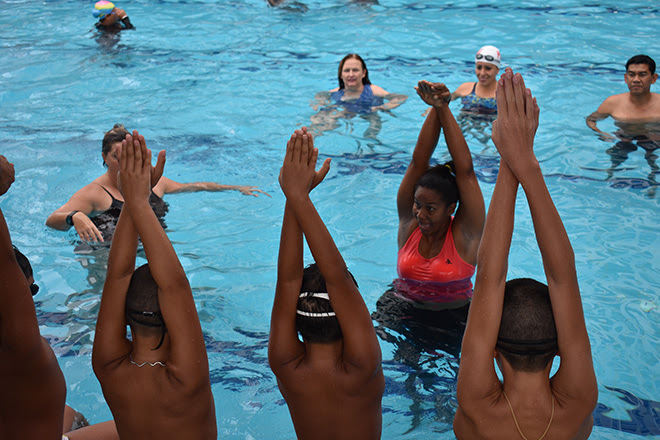FINA News: Swimming for Life Clinic in Bangkok
First Swim for All, Swim for Life Clinic – social responsibility

Last week's Swimming for all, Swimming for Life Clinic in Bangkok, chaired by FINA Vice-President and IOC Member Sam Ramsamy, was a very fruitful and successful first edition.
High-profile speakers addressed key topics and discussions over the three-day rendezvous, which are all detailed in the text below.
Dual health benefits
A World Health Organization (WHO) global report on drowning of November 2014 said 372,000 people die each year due to drowning. As the guardians of aquatic sports, FINA could not face this reality without acting.
Addressing the delegates, FINA President Dr. Julio C. Maglione said: “Our federation is known for its memorable sporting events and its major stars in six disciplines across five continents and 207 federations but as the organisation responsible for aquatic sports we are also conscious of having a crucial social responsibility to all those who are not familiar with our great natural element, water.”
Further speakers also added some important points.
FINA Vice-President Tamas Gyarfas spoke of ways to connect the inaugural World Aquatics Day on 1 July this summer with the Learn to Swim programmes.
“In some parts of the world it’s not just about engaging more children – it’s more about life saving,” he said.
“World Aquatics Day is a great opportunity to raise awareness, too. This is a great way to connect the Swim for All programme and the World Aquatics Day – a winning combination to engage more youngsters and to prevent more and more little kids from drowning. FINA is here, we can offer our tools to answer the global challenges: we have our stars, we have the popularity of our sport, they can all help to make our world a better place.”
FINA Bureau Member Dr. Margo Mountjoy talked about implementing Learn to Swim programmes.
She highlighted the dual health benefits, one being drowning prevention and the other promotion of physical activity.
Dr. Mountjoy put special emphasis on the fact that the vast majority of drownings are preventable, so prevention is the most important method of reducing the number. But swimming is also a fine tool to stay healthy as 60% of all global deaths can be attributed to non-communicable diseases like cardiovascular diseases, diabetes, strokes, respiratory diseases and some cancers – almost all can be related to physical inactivity, which is fourth in the list of risk factors for death. This is responsible for 3.2 million deaths annually in the world.
Dr. Mountjoy also recalled that physical activity reduces the risk of a series of diseases by huge margins (e. g. heart disease by 40%, diabetes by 50%, colon cancer by 50%, high blood pressure by 50%).
Risks and ways of prevention
Helen Herbert from South Africa, a lifesaving expert, drew on WHO statistics which said children, males and individuals with increased access to water were most at risk of drowning.
